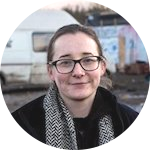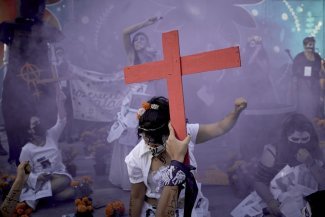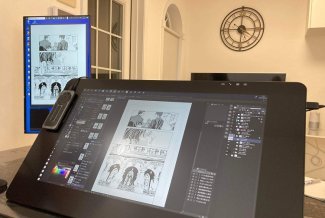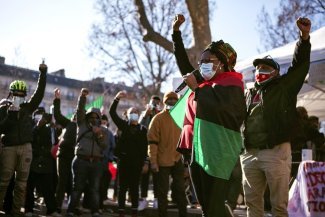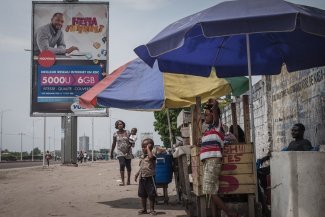Monday, 31 August 2015 is a day most Austrians are unlikely to forget anytime soon. As the country saw the largest number of refugees ever to arrive in a single day – with 3,650 people travelling on packed trains from Hungary – 20,000 people took to the streets of Vienna to protest against the treatment of asylum seekers.
The following weekend, an unprecedented 12,000 refugees were allowed to cross the border from Hungary.
But what will happen to those new arrivals fortunate enough to be granted permission to stay in Austria? A handful may end up in Macondo, a neighbourhood just five miles down the road from the demonstrations. Lodged between a sewage plant and a busy motorway connecting Vienna’s city centre to the airport, 2000-odd people live in Macondo, one of Austria’s oldest refugee settlements.
Established in the 1950s on the site of a former army barracks, Macondo is seen as a positive example of community collaboration, celebrated as a case study in the ability of refugees to adapt to new surroundings and, through the power of shared experience, form their own support networks.
Some who have worked in the neighbourhood, however, say that it also provides a lesson in what not to do when it comes to integration policy, in particular its isolated location on the city limits.
In any case, as Europe faces its most serious refugee crisis since the Second World War, understanding Macondo provides a broader context to some of today’s asylum challenges.
Half a century of asylum in Austria
The history of Macondo reads like a history of contemporary global conflict. First taking in 200,000 Hungarians fleeing communism in the 1950s, it later became home to thousands of families escaping both sides of the Cold War.
This included some of the 160,000 (then) Czechoslovakians who arrived in the 1960s and 1970s as well as the 33,000 Poles who came to Austria in the 1980s. But it was Latin Americans, who came to Austria following anti-communism repression in the 1970s, that named the neighbourhood Macondo after the fictional village in Gabriel García Márquez’s novel One Hundred Years of Solitude.
Over the years the settlement became a cultural melting pot, where residents clashed over politics but collaborated to cultivate small agricultural plots. Today some of its original inhabitants are still there, but most new families come from Somalia, Chechnya, Afghanistan and Syria. As authorities got more involved, the neighbourhood changed both to the benefit and disadvantage of residents – but a strong sense of community has been fostered nonetheless.
“There is a very good welcome here for new groups. The old groups help the new people to settle,” explains Jan Kubis, a social worker for a local branch of the Austrian social welfare NGO Diakonie.
“It is a typical neighbourhood but different perhaps because the people have a shared experience. They have been through similar things and solidarity comes from sharing your experiences.”
Long-term resident, Ramon Villalobos from Chile, says: “There are unwritten rules here that whoever comes here will be greeted. No matter where he comes from, our gardens and our houses are always open.”
This community atmosphere has inspired several artistic projects, most famously the 2014 film Macondo from Austrian director Sudabeh Mortezai, which follows a young Chechen refugee trying to navigate family life.
In an interview Mortezai gave during the film’s release, she said the main inspiration for the film came from Macondo itself. “It’s a fascinating world. There are a lot of tensions too, some racism, poverty problems, but at the same time it is a very interesting mix of different cultures,” she said.
Artist Claudia Heu also spent a year between 2008 and 2009 living and working in Macondo as part of the art collective Cabula6. The area inspired the artists so much, they approached UNESCO about trying to get world cultural heritage status and asked Márquez if he would be a patron of the area, although the author was too sick at the time and the talks fell through.
As the only native Austrian there, Heu said she felt welcomed.
“I love the history of the place, this grey zone, in which so many different communities lived next to each other and, for more the 20 years, found their way of communicating without any official integration politics,” she tells Equal Times.
“This strong history of independence and playfulness and creativity is still visible in some gardens, mainly those from the Hungarians, Chileans, Slovaks, Vietnamese that were built in the 1970s and 1980s.”
Integration difficulties
When Equal Times visited the neighbourhood during the summer holidays, children from different countries were playing together around the estate. A group of artists came to Macondo earlier that day and painted with the kids; their pictures now decorate the courtyard.
It was a happy scene, although it was clear that life can be difficult.
Getting there involves travelling to the end of the underground line followed by a 10-minute bus journey. Critics say this isolation does nothing to encourage integration with the wider community.
In fact, isolated accommodation is a problem for many migrants, refugees and asylum seekers in Austria, particularly for the newly-arrived. Austria currently receives, per capita, the greatest number of asylum applications in Europe and much of the current debate has been around border controls, particularly following the deaths of 71 refugees (including four children) in a lorry near the Hungarian border.
For some time now, refugee organisations have been calling for more help integrating newcomers both in terms of work and housing.
In Macondo this failing was made apparent when the integration centre, which had been built in 1990s to help some of the 90,000 Bosnian refugees in Austria find homes and learn German, was shut down.
It was replaced by a detention centre which holds people whose asylum applications have been refused before deportation. According to Kubis, the cries of those who are about to be sent back home can sometimes be heard from the building. It’s a situation he describes as a “disgrace”.
The question of who is responsible for the area is contentious. Macondo is run-down, with rubbish and trolley carts piled on the grass and a small playground overcome with weeds. The playground is locked up because – after two years of trying – Diakonie cannot find the body responsible for opening and looking after it.
It is a similar situation for the football pitch. A muddy grey patch with two rusting goalposts, Kubis says the area is full at the weekends with lively matches between multinational teams. But before any improvements can be made, national, provincial and district authorities need to sit down together and agree on a plan.
This is difficult due in part to the power struggle between the different authorities which fail to cooperate with one another, especially when it comes to asylum issues. “We’ve spent two years trying to get these people together,” a frustrated Kubis says. “The different players don’t interact with each other very well.”
When authorities do get involved, the results are mixed. The area no longer has a problem with rubbish collections or street lights as it did 20 years ago but the freedom residents had to cultivate their own community gardens has been restricted by the introduction of garden rents.
Although the local council did not respond to our request for comment, even with its faults, the atmosphere in Macondo is generally positive. The people who live there have already had their asylum applications accepted which means they are allowed to work, usually in menial jobs at the airport or in local factories.
They have their papers, they have a place to live and while they may be far away from home, these men, women and children have a future in Austria.


